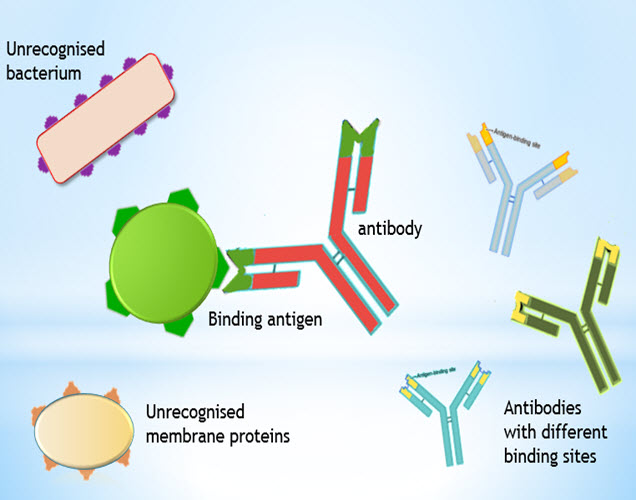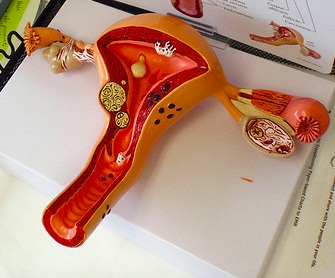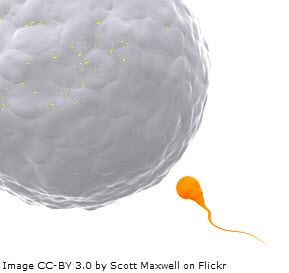HL Animal Physiology Activities for Learning
Lesson Plans for the HL Animal Physiology Topic
The ideas for learning activities on this page cover the IB guide for this topic. There is a mix of laboratory work, theory lessons, and assessment materials with model answers.
Antibody & vaccination - planning sheet 11.1This simple sheet sets out the learning objectives, essential questions and some ideas for assessment for the following activities. |
|
|
|
Antibody productionTime: 1 hour The concepts of antibody production are covered in some detail, including the roles of macrophages, helper-T cells and B-cells. This is followed by the production of monoclonal antibodies. Students then explore how a pregnancy testing kit works. |
 |
Monoclonal antibodiesTime: 2 hours The discovery of antibodies and the immune response has led to a number of medical uses. Where the antibodies are harvested from a single clone of B-lymphocytes these antibodies are called "monoclonal antibodies". This distinguishes it from the "poly-clonal response" which is more common in the immune system. Herceptin as a cancer drug is one example and the other is a pregnancy test. New detail - Antigens on the surface of red blood cells stimulate antibody production in a person with a different blood group |
|
|
VaccinationTime: 2 hours The principals of vaccination begin this lesson which is followed by discussion about the advantages and dangers of vaccination. This is to include- Analysis of epidemiological data related to vaccination programmes - eg eradication of smallpox by vaccination. |
Movement - planning sheet 11.2This simple sheet sets out the learning objectives, essential questions and some ideas for assessment for the following activities. |
|
 |
Muscles and jointsTime: 1 hour Using a model skeleton or interactive web tools like "Zygotebody" and "Visible Human" students identify different joints in the skeleton before exploring the detail of sinovial joints and the human elbow. There are questions to answer and a worksheet to support student record keeping. Also Bones and exoskeletons provide anchorage for muscles and act as levers. and Antagonistic pairs of muscles in an insect leg. |
 |
Muscle contractionTime 1 hour Students use a short powerpoint introduction to identify key points of muscle structure and the interaction between myosin and actin filaments in sarcomeres before answering some questions on a worksheet. In a second activity they discover the molecular details required for IB Biology and a final whole class activity helps students to memorise the details. This detail has changed: Describe the structure of striated muscle fibres, including the myofibrils with light and dark bands, mitochondria, the sarcoplasmic reticulum, nuclei and the sarcolemma. |
Kidney - planning sheet 11.3This simple sheet sets out the learning objectives, essential questions and some ideas for assessment for the following activities. |
|
|
|
Osmoregulation.Time: 1 hour A short introduction to osmoconformity and osmoregulation across the animal kingdom. Included are also some of the differences in nitrogenous waste excretion which usually accompanies osmoregulation. |
 |
Kidney and nephrons.Time: 1 hours Students begin by looking at the gross structure of the kidney followed by a detailed analysis of the structure and function of the nephron. There is a practical dissection activity and some text based activities supported by videos and structured worksheets students explore the different parts of a nephron and then test their knowledge with some IB style questions. |
Sexual Reproduction - planning sheet 11.4This simple sheet sets out the learning objectives, essential questions and some ideas for assessment for the following activities. |
|
 |
Gamete formation.Time: 1h Details of the processes of gametogenesis and spermatogenesis are covered in this lesson. Students make comparisons and learn the similarities between these two processes as well as their differences. |
 |
Fertilization & blastocystTime: 1h Students watch short videos illustrating internal and external fertilization before studying the processes which take place during fertilization. There is an activity to sort the steps into the right order followed by some flashcards. A final stepping stones activity also includes the early development of the embryo into a blastocyst is followed by implantation and the growth of the placenta. |
 |
Pregnancy and birthTime: 1h Students study simply how the hormone HCG stimulates the ovary to secrete progesterone during early pregnancy. Once the embryo is implanted, its placenta facilitates the exchange of materials between the mother and fetus while continuing the production of estrogen and progesterone until positive feedback involving oxytocin leads to birth. Using simple diagrams and IB style questions students make a few notes and test their understanding. |

 IB Docs (2) Team
IB Docs (2) Team



